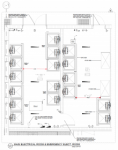chris kennedy
Senior Member
- Location
- Miami Fla.
- Occupation
- 60 yr old tool twisting electrician
Reading through this looking for verbiage that states you CAN or CANNOT egress through a compliant door from one electrical room into another.
Could one of you English majors break that down for me please?
Thanks
Could one of you English majors break that down for me please?
Thanks




